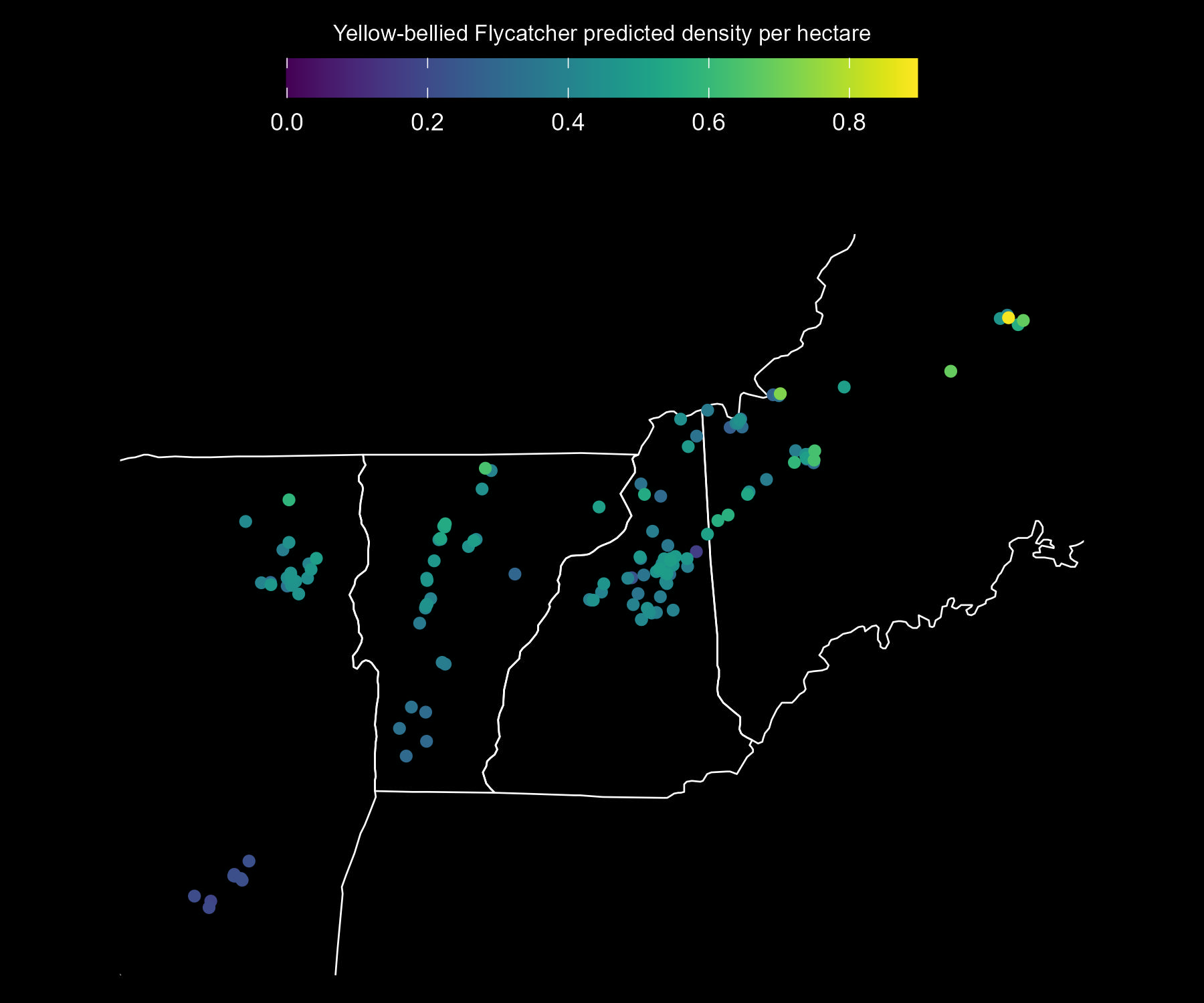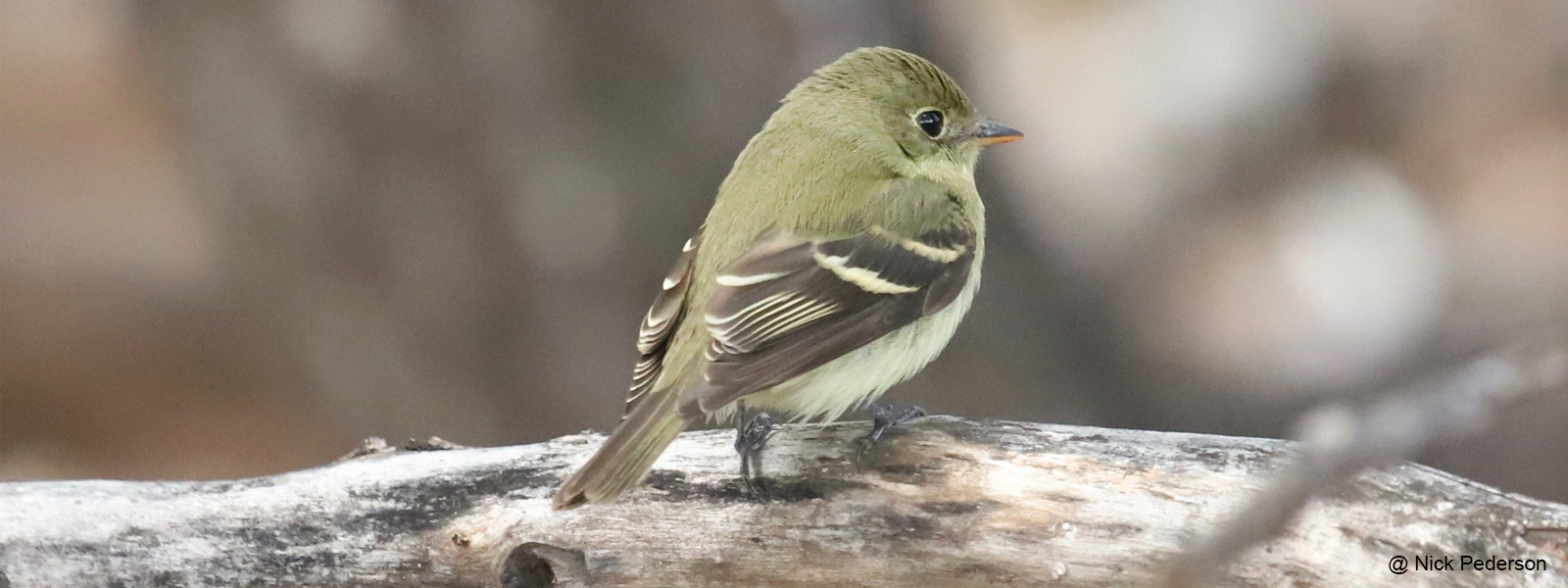The State of Yellow-bellied Flycatchers in the Northeast
Regionally: Slightly declining

The mean (thick, yellow line) annual estimate of Yellow-bellied Flycatcher abundance within the immediate area surrounding all 803 Mountain Birdwatch sampling locations, with a 95% Bayesian credible interval (blue polygon, representing estimate uncertainty).
Yellow-bellied Flycatcher was not one of the original Mountain Birdwatch species monitored between 2000 and 2010, but so little is known about this species that we felt compelled to contribute to the scientific knowledge of the Moss Tyrant. Yellow-bellied Flycatcher populations in our region appear to have declined in recent years across the Mountain Birdwatch region (mean annual regional trend = -2.64%, 80% Bayesian credible interval = -3.59% to -1.67%). Declines are the most substantial in the Catskills of New York where this species has gone from uncommon (46 individuals detected in 2011) to just 9 and 10 individual birds detected in 2023 and 2024, respectively.

Predicted Yellow-bellied Flycatcher adult density per approximate hectare in an average year (between 2010 and 2024), as estimated from Mountain Birdwatch data. The base map shows the extent of the Mountain Birdwatch region: eastern New York, Vermont, New Hampshire, and western Maine.
| Region | Mean annual trend (%) | Trend 80% CRI | Probability of decrease | Probability of increase | Population change (%) 2010-2024 | Population change (80% CRI) |
|---|---|---|---|---|---|---|
| All regions | (-3.59, -1.67) | >0.99 | <0.01 | -31.25 | (-40.07, -21.04) | |
| Maine | (-4.67, -1.81) | >0.99 | <0.01 | -32.59 | (-45.21, -17.32) | |
| New Hampshire | (-3.25, -0.98) | 0.99 | 0.01 | -25.89 | (-37.00, -12.82) | |
| New York (all regions) | (-3.82, -1.27) | >0.99 | <0.01 | -30.25 | (-42.05, -16.34) | |
| New York (Adirondacks only) | (-3.42, -0.74) | 0.98 | 0.02 | -25.55 | (-38.56, -9.94) | |
| New York (Catskills only) | (-11.02, -4.23) | >0.99 | <0.01 | -67.24 | (-80.49, -45.38) | |
| Vermont | (-4.21, -1.35) | 0.99 | 0.01 | -32.59 | (-45.21, -17.32) |
Globally: Increasing
The vast majority (>95%) of Yellow-bellied Flycatchers breed in Canada where this species is increasing in numbers, particularly in the northern and western part of their range. The discovery of new breeding populations recently in eastern Alaska also suggests a global population growing northward. Yellow-bellied Flycatchers are rarely detected during USGS Breeding Bird Surveys in the northeastern U.S., and eBird trends are only available for the nonbreeding season where they appear to be becoming more common. This nonbreeding season increase may be driven by the increasing number of Yellow-bellied Flycatchers coming from the northwestern portion of this species’ range.


